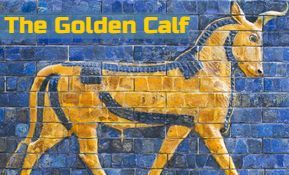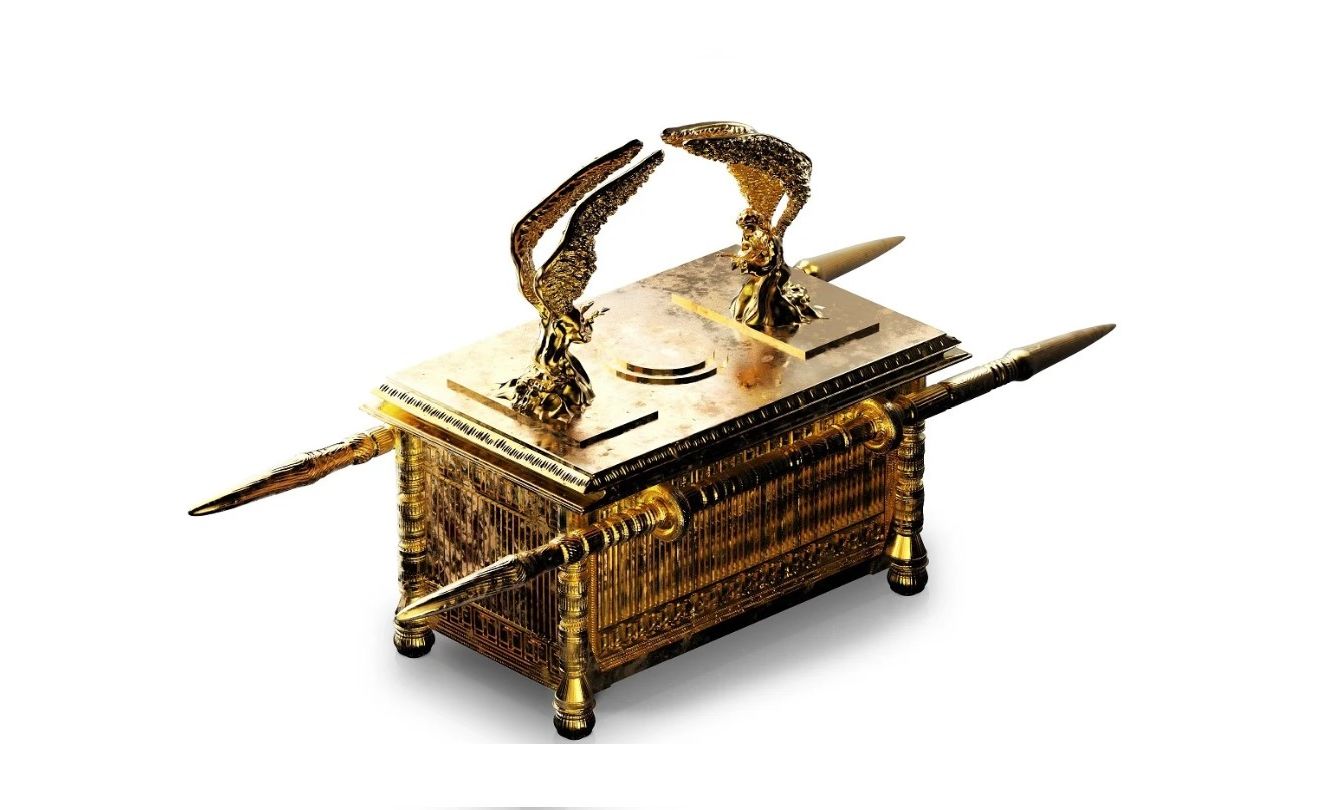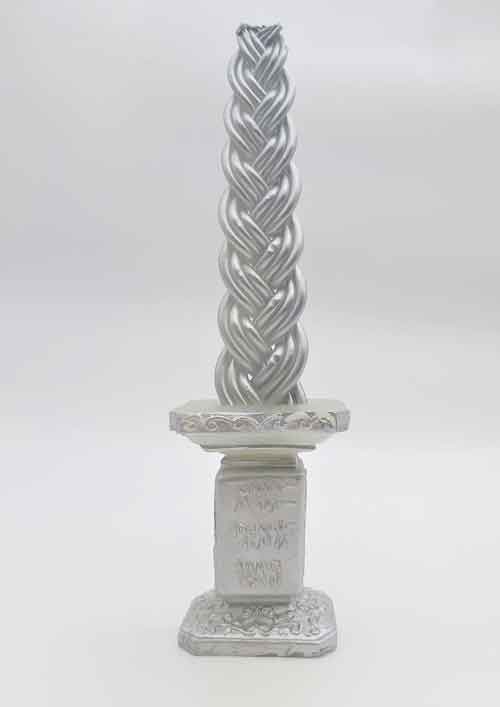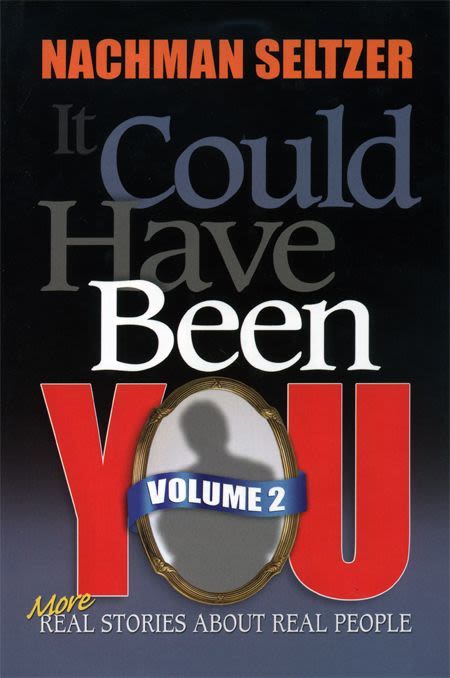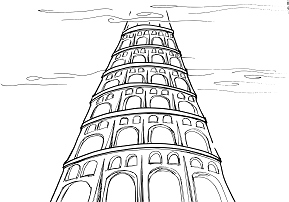
Noach: Peace and Unity
It seems ludicrous that people who had first-hand evidence of the Flood could convince themselves that they could bypass God’s control..

From Generation to Generation
The ten generations from Adam to Noach ended in failure; mankind stumbled into a downward spiral until God decided that the entire world would be destroyed, with the exception of Noach, his family, and the animals which took haven in the ark that he built.
“These are the generations of Noach, Noach was a righteous man, perfect in his generations; Noach walked with God” (Bereishit 6:9).
There are different interpretations of the phrase “in his generations.” Some Sages maintain that "in his generation" is in praise of Noach. Since Noach was righteous even in his corrupt generation; how much more righteous he would have been if he had lived in a truly righteous generation — if he had had the inspiration of Avraham (Abraham)!
According to others, however, "in his generation" means only “in his generation.” Compared to his extremely wicked generation he was righteous; but had he lived at the time of Avraham he would have been insignificant (Rashi).
The Sages make comparisons between Noach and Avraham, each in their respective generation. Although the story of Noach in the Generation of the Flood is one that is well known, the Generation of the Dispersion in Avraham's time is one that is less familiar.
[In the chronology from the creation of Adam, we see that the Flood occurred in the year 1656 from Creation, and Noach lived until 2006. Avraham was born in 1948, and lived 175 years until 2123. Their lifetimes overlapped 58 years, and in fact, the Ramban writes (Bereishit 10:2) that Avraham visited Noach in his home and heard direct testimony from him about all the events of the Flood.
The events of the Tower of Babel and the Dispersion (Bereishit 11) occurred in the year 1996 from Creation, 340 years after the Flood, when Avraham, 48 years old, had already recognized his Creator (Seder Olam).]
What Went Wrong?
Let us follow in the footsteps of the Sages as they compare Noach’s generation, the Generation of the Flood, with Avraham’s generation, the Generation of the Dispersion.
The Torah emphasizes that the people in the Generation of the Flood sinned in thievery and depravity, and their punishment was that they were wiped off the face of the earth.
We can understand their mistake by examining Mishlei (18:1): “Lust seeks separation.” Just as a dog wants to be alone with his bone and growls at an intruder, a lustful person destroys social relationships in his selfish pursuits. The people of this generation became animal-like in their unbridled lusts, and this broke down all semblance of humanity. The consequence was measure for measure: They ignored their souls and pursued only their materialistic side, thus, they lost their bodies in the Flood.
The sin of the Generation of the Dispersion, however, is not clear. A look at the verses leaves us wondering, what did they do wrong?
“Now the entire earth was of one language and uniform words” (Bereishit 11:1).
They were unified and humane. It seems as if they corrected the sin of the Generation of the Flood. So why were they dispersed over the face of the earth?
“And it came to pass when they traveled from the east, that they found a valley in the land of Shinar and settled there. And they said to one another, ‘Come, let us make bricks and fire them thoroughly;’ so the bricks were to them for stones, and the bitumen was to them for mortar. And they said, ‘Come, let us build ourselves a city and a tower with its top in the Heavens, and let us make ourselves a name, lest we be scattered upon the face of the entire earth’” (Ibid. 2-4).
Their plans seem reasonable and innocent. They wanted to maintain their unity. What could be wrong with that?
The Tower of Babel
Through analyzing these verses we can see why Hashem reacted so severely to their plans. Why did they migrate from the east, and what did they find so special about the valley in Shinar? The Torah seems to dwell excessively on their choice of materials. Why do we need so many details about the bricks? And what does it mean, “let us make ourselves a name?”
The last question can be answered by looking at Hebrew expression for "name," shem. Shem has the same root as neshamah, soul, which is the essence of man. The name is the essence of the thing. Therefore, we can conclude that the people of this generation sought to define their own essence: “Let us make ourselves a name.”
The honest work of a created being is to seek its purpose in life from its Creator. When they decided to determine their own essence, they were in fact rejecting their Creator and seeking to define their purpose in existence without Him. That is rebellion, and hence we can understand the Sages’ statement: “They spoke against the sole One of the world and waged war against Him” (Rashi).
This explains the Torah’s emphasis on their choice of location for settlement and the bricks used for constructing the Tower. The valley of Shinar was a flat, empty plain in what is today modern day Iraq. It did not have any natural resources for building – no wood or stone. Why would they seek such an uninviting, desolate place?
The seemingly extra phrase reveals their intention: “So the bricks were to them for stones, and the bitumen was to them for mortar” (Ibid. 3). They wished to replace the natural elements, the stones and mortar, prepared by the Creator, with man-made technology. Thus we see another element in their rebellion. They sought to prove they could make it on their own; they did not need God for anything. Man, with his advanced technological science, can control his destiny without needing the Creator.
This was the intent of the Tower of Babel: “They said, ‘Once every 1,656 years, the sky totters, as it did in the time of the Flood. Come and let us make supports for it’” (Rashi). It seems ludicrous that people who had first-hand evidence of the Flood could convince themselves that they could bypass God’s control of events. However, when mankind is bent on self-deception they can build substance out of nothing.
Avraham countered the rebellion against God and its leader, Nimrod. He rose from the idolatrous background of his father Terach to teach the world that we have to devote ourselves to God’s purpose in creating mankind. We accomplish this through our efforts in Torah, Avodah (service to God), and Chesed (acts of loving-kindness) (Avot 1). The Creator determines the ultimate purpose of life, not His created beings.
The true use of technology is to complete the Creation, as partners with the Creator. We mention this idea in the verse recited in Kiddush on Friday night: “God blessed the seventh day and sanctified it because on it He abstained from all His work; which God created to make” (Bereishit 2:3). It would have been sufficient to write, “which God created,” why does the verse add, “to make?” This teaches that mankind is partner in the ongoing process of Creation.
Does the Punishment Fit the Crime?
Once we understand the verses, we understand the sin of the Generation of the Dispersion. Let’s return to our comparison. Which sin was worse, the animalistic lusts of the generation of the Flood, or the open rebellion of the Generation of the Dispersion?
A man has two sons. One loves his father and seeks a relationship with him, but is unable to control his urges. The other rebels against his father and wants to have nothing to do with him. Which son causes the most heartache? Obviously, the rebellious son has committed the greater sin.
Which generation, however, received the more severe punishment? The Generation of the Flood perished from the earth, while the Generation of the Dispersion were only scattered!
In response to this difficulty, Rashi comments: “Because the Generation of the Flood were robbers and there was strife between them, therefore they were destroyed. But these [the Generation of the Dispersion] behaved with love and friendship among themselves, as it is said (Ibid. 11:1): ‘One language and uniform words.’ Thus you learn that discord is hateful, and that peace is great.”
Although the Generation of the Dispersion committed the graver sin, love and friendship brought them to a higher level of humanity, which saved them from destruction. Peace brought them closer to the goal for which man was created — to go beyond self, to overcome one’s animalistic urges and become more humane.
Avraham My Chosen One
Noach was righteous, but he needed help: “Noach walked with God” (Ibid 6:9) – “But concerning Avraham, Scripture says (Ibid. 24:40): ‘[Hashem] before Whom I walked.’ Noach required God’s support to uphold him in righteousness, but Avraham strengthened himself and walked in his righteousness by himself” (Rashi).
Noach had to battle a generation that surrendered to their urges, and he needed Divine assistance to resist the temptations. After the Flood, the mission of humanity fell to Noach and his descendents. The next ten generations failed, for although they corrected the collapse into unbridled passions, they fell prey to heresy and rebellion against the Creator.
Avraham was so great and so concerned with helping others that he was able to prevent destruction and save the world. “There were ten generations from Noach to Avraham. This demonstrates how patient God is, for all the generations kept provoking Him, until the Patriarch Avraham came and received the reward of them all” (Avot 5:2).
Avraham’s greatness lay in the fact that God knew that he and his offspring would accept the role that had previously been open to all humanity. He and his offspring would be God’s people and bear the primary responsibility for bringing the Divine plan to fruition. The children of Noach would be left with the seven universal commandments, but Avraham’s would accept the Torah with 613 Commandments.
God testified Avraham’s unique ability to form the Chosen People (Ibid. 18:19): “For I have known him because he commands his sons and his household after him, that they should keep the way of Hashem to perform righteousness and justice.” The power of the people of Israel lies in their ability to transmit their heritage from generation to generation.
The Generation of the Flood was selfish, with hardly a semblance of humanity. The Generation of the Dispersion developed unity in harmony and peace. However, it is not enough to be united around a common goal, for the goal could be disastrous, leading to rebellion against the Creator.
Avraham taught the world that true peace is achieved when the world unites around the goal of serving the Creator, as we pray every year on Rosh Hashanah: “May they all blend into one brotherhood to do Your will with a perfect heart.” Amen.



